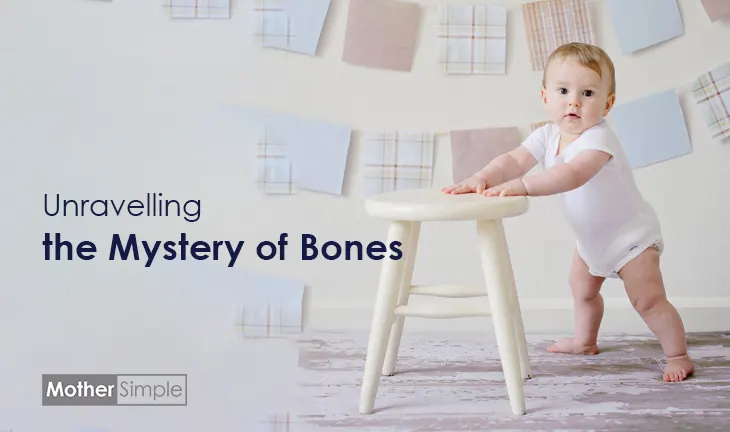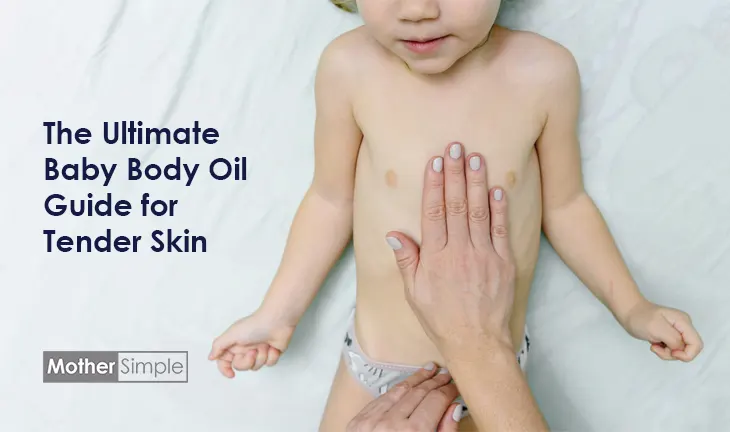1. Why would babies have more bones than adults?
Babies have more bones than adults due to a fascinating process called ossification, where some bones fuse together as they grow.
This phenomenon serves a crucial purpose in facilitating the journey of birth and allowing for the flexibility needed during early development.
Soft and Flexible Cartilage
At the early stages of life, many of a baby’s “bones” are composed of soft and flexible cartilage rather than the hard bones seen in adults. Cartilage is a resilient type of connective tissue found in various parts of the body, such as joints, nose, and ears.
The Role of Ossification
Ossification is the transformative process in which cartilage gradually converts into bone tissue. It begins in the womb and continues throughout childhood and adolescence.
As the baby grows, the cartilage present in their bones undergoes ossification, leading to the replacement of cartilage with bone.
Ensuring Flexibility and Passage
The abundance of cartilage in a baby’s skeletal structure ensures its flexibility and squishiness, making it easier for them to pass through the birth canal during delivery.
The pliability of cartilage allows for smoother transitions and minimizes potential complications during this critical phase.
The Journey of Bone Formation
From the moment of conception, the process of ossification sets the stage for bone development. Through a gradual transformation, cartilaginous structures evolve into solid bones, creating a sturdy framework to support the growing body.
Completion of Ossification
As a person progresses through childhood and reaches adulthood, the ossification process continues. By the time an individual reaches maturity, all the bones in their body will have undergone the transformation from cartilage to bone, resulting in a reduced bone count compared to infancy.
Embracing the complexity and marveling at the intricacies of human development, we can appreciate the temporary abundance of bones in babies, knowing that each stage serves a vital purpose in shaping their growth and ensuring their well-being.
2. Why Are Some People Born with Extra Bones?
Several factors contribute to the occurrence of extra bones in individuals. Understanding these reasons sheds light on the complexities of bone development and genetic anomalies.
- Genetic Factors
One reason for the presence of extra bones at birth is faulty genes involved in bone development. Genetic mutations or abnormalities can disrupt the normal processes of bone formation, leading to the emergence of additional bones or the fusion of bones that should remain separate.
- Polyostotic Fibrous Dysplasia (PFD)
Polyostotic fibrous dysplasia (PFD) is a rare genetic disorder characterized by the abnormal growth of bone tissue. People with PFD may develop extra bones or experience enlargement of existing bones due to the overgrowth caused by this condition.
- Congenital Pseudarthrosis of the Tibia (CPT)
Congenital pseudarthrosis of the tibia (CPT) is a rare condition that affects the growth of the tibia, the shinbone. In some cases, this condition can lead to the formation of an extra bone or the separation of the tibia into two bones.
- Harmless Nature of Extra Bones
In most cases, extra bones are harmless and do not pose any significant problems. They may go unnoticed or cause minimal impact on daily life. However, in certain instances, extra bones can lead to pain or interfere with movement.
- Consulting a Doctor
If you have concerns about extra bones or their potential impact on your well-being, it is advisable to consult a medical professional. A doctor can assess your specific situation, determine if the extra bones are causing any issues, and recommend appropriate treatment, if necessary.
Common Extra Bones:
- Supernumerary Ribs: Additional ribs located below the normal ribs. While they are typically harmless, they can occasionally cause discomfort or affect breathing.
- Accessory Navicular Bone: An extra bone found in the foot. While usually benign, it can sometimes cause pain or difficulties with shoe wear.
- Os Trigonum: An extra bone situated behind the ankle. While generally harmless, it can cause pain or hinder walking in some cases.
- Fabella: A small bone located behind the knee. Although typically benign, it can occasionally lead to discomfort or restrict knee flexion.
If you have any concerns regarding extra bones, it is crucial to consult a healthcare professional who can evaluate your specific situation, assess any potential problems, and guide you on appropriate treatment options.
3. How Rare Is It to Have an Extra Bone?
Have you ever wondered how often people are born with an extra bone? Well, it’s actually quite rare. Extra bones fall into the category of anatomical variations, and they don’t occur frequently in the general population.
Each person’s body is unique, and while some individuals may have these extraordinary bone anomalies, they are not commonly observed.
The occurrence of individuals born with an extra bone is relatively rare. These anatomical variations are not frequently observed in the general population.
- Unique Bodies and Anatomical Variations
Each person’s body is unique, and while some individuals may have extraordinary bone anomalies, they are not commonly encountered.
- Variability of Rarity
The rarity of having an extra bone can vary depending on the specific bone and the population being studied. Different bones may have different prevalence rates among individuals.
- Accessory Navicular Bone
The accessory navicular bone is one example of an extra bone. It is found in approximately 15-30% of people in the general population.
- Os Trigonum
Another example is the os trigonum, which is present in approximately 7% of individuals.
Understanding the rarity of having an extra bone provides insight into the fascinating diversity of human anatomy. While these variations may occur in some individuals, they remain exceptional occurrences rather than common occurrences.
Here are some of the most common extra bones and their prevalence in the general population:
- Accessory navicular bone: 15-30%
- Os trigonum: 7%
- Supernumerary ribs: 0.5-3%
- Bipartite patella: 2-5%
- Os supranaviculare: 1%
It is important to note that these are just estimates, and the prevalence of extra bones can vary depending on the population being studied. If you are concerned that you or your child may have an extra bone, see a doctor for diagnosis and treatment.
4. Which Bones Fuse Together After Birth?
As we grow and develop, certain bones in our bodies undergo a process of fusion, gradually forming a solid and stable structure. Here are examples of bones that fuse together after birth:
- Skull Bones: The frontal, parietal, temporal, and occipital bones, which make up the skull, fuse together over time, creating a protective casing for the brain. This fusion typically occurs by the age of 2.
- Sacrum: Located at the base of the spine, the sacrum is formed by the fusion of several vertebrae. It provides support and stability to the pelvis.
- Coccyx: Also known as the tailbone, the coccyx is formed by the fusion of several small bones. It serves as an attachment site for ligaments and muscles.
- Spine: The spine consists of 33 vertebrae separated by cartilaginous discs. Over time, these vertebrae and discs fuse together, usually completing the process by the age of 25.
- Ribs: The ribs, which are connected to the spine and sternum, fuse together gradually, typically by the age of 25.
- Pelvis: Comprising the ilium, ischium, and pubis bones, the pelvis undergoes fusion as these bones unite over time, usually by the age of 25.
- Ossification and its Significance
The process responsible for bone fusion is called ossification. It involves the formation of bone tissue, starting in the womb and continuing throughout childhood and adolescence. By adulthood, all the bones in the body have completed their fusion.
Bone fusion serves several important purposes:
- Strength and Injury Resistance: Fusion enhances bone strength, making them more resilient to injuries.
- Support for the Body: Fused bones provide structural support, helping maintain the body’s shape and stability.
- Organ and Tissue Protection: Bone fusion helps safeguard organs and delicate tissues by creating a protective framework.
- Potential Issues and Concerns
In some cases, bone fusion may be delayed or incomplete, leading to conditions like scoliosis, characterized by an abnormal curvature of the spine. If you have concerns regarding bone fusion, it is advisable to consult with a doctor. They can assess any potential issues and provide guidance on necessary treatments.
5. What Is the Smallest Bone in the Child’s Body?
- The Stapes: The Smallest Bone in a Child’s Body
Within the fascinating realm of a child’s body, there exists a bone of remarkable significance—the stapes, also known as the stirrup bone. It belongs to a group of three bones known as the ossicles, situated in the middle ear.
- Crucial Role in Hearing
Although the stapes are incredibly small, their role in the auditory process is pivotal. It acts as a bridge, transmitting sound vibrations from the eardrum to the inner ear. This transmission of vibrations is essential for our ability to hear and perceive the rich tapestry of sounds that surround us.
- Part of the Ossicular Chain
The Stapes is not alone in its mission. It forms a crucial link within the ossicular chain, which comprises the malleus (hammer), incus (anvil), and stapes (stirrup). These three bones work harmoniously to amplify and transmit sound waves, allowing us to interpret the auditory signals received by our ears.
- Precise Movements and Amplification
As sound waves enter the ear, they cause the eardrum to vibrate. The vibrations are then passed along to the malleus, which subsequently transfers them to the incus.
Finally, the incus transmits vibrations to the stapes, which rests against the oval window—a membrane-covered opening in the inner ear.
The stapes’ precise movements against the oval window facilitate the amplification and efficient transmission of sound into the fluid-filled cochlea, where the auditory signals are converted into electrical impulses and sent to the brain for interpretation.
- A Remarkable Example of Complex Design
The stapes’ small size, delicate structure, and pivotal role in the auditory process exemplify the intricacy and sophistication of the human body. Despite its unassuming appearance, the stapes contribute significantly to our ability to experience the symphony of sounds that enrich our lives.
6. What Is the Strongest Bone in the Child’s Body?
- The Femur: The Strongest Bone in a Child’s Body
In the realm of strength within a child’s body, there exists an unrivaled champion—the femur, the longest bone in the human body. Residing in the thigh region, the femur serves as a pillar of support, enabling children to engage in vigorous activities such as running, jumping, and playing.
- Unyielding Strength and Stability
The femur’s exceptional strength allows it to withstand significant forces, providing stability and resilience in the lives of children. Its robust structure ensures that it can endure the demands placed upon it during physical exertion and play.
- Integral Role in Child’s Development
The femur holds immense importance in the child’s overall development. It plays a vital role in enabling proper growth, preventing injuries, and supporting healthy skeletal development. Maintaining the femur’s health and strength is crucial for the child’s well-being.
- Promoting Healthy Femur Development
Parents can take several proactive steps to support the healthy development of their child’s femur, including:
- Ensuring an Adequate Intake of Calcium and Vitamin D: Calcium and vitamin D are essential nutrients for promoting bone health. Including calcium-rich foods like dairy products, leafy greens, and fortified foods in the child’s diet, along with adequate sun exposure for vitamin D synthesis, can contribute to optimal femur health.
- Encouraging Regular Physical Activity: Engaging in regular physical activity, such as running, cycling, or participating in sports, helps strengthen the bones and promote overall skeletal health. It is essential for parents to encourage their children to lead an active lifestyle.
- Managing Healthy Body Weight: Excessive weight gain can impose stress on the bones, including the femur, increasing the risk of injury. Encouraging a balanced diet and promoting regular exercise can help maintain a healthy body weight and alleviate undue strain on the femur.
- Consulting with a Doctor
If any concerns arise regarding the child’s bone health, it is advisable to consult with a doctor. They can provide appropriate guidance, address any specific concerns, and ensure optimal bone health and development for the child.
The femur’s role as the strongest bone in a child’s body highlights its significance in enabling physical activity, growth, and overall well-being.
By prioritizing proper nutrition, physical activity, and regular medical check-ups, parents can support the healthy development of their child’s femur and foster a strong foundation for a thriving future.
7. What Is the Smallest Organ in the Child’s Body?
- The Pineal Gland: The Smallest Organ in a Child’s Body
Within the intricate workings of a child’s body, the pineal gland emerges as the tiniest organ. Nestled in the center of the brain, this pea-sized gland holds significant importance. Its primary role involves the production of melatonin, a hormone that regulates the body’s sleep-wake cycle.
- Development of the Pineal Gland
At birth, the pineal gland is not fully developed. It continues to grow and mature throughout childhood and adolescence. By the time a person reaches adulthood, the pineal gland typically attains the size of a pea.
- Key Functions and Regulation
The pineal gland assumes vital functions within the body. It actively participates in regulating the sleep-wake cycle, which holds great importance for overall health and well-being. Additionally, the pineal gland aids in regulating the production of sex hormones, contributing to the body’s hormonal balance.
- Factors Influencing Pineal Gland Function
Several factors can affect the function of the pineal gland, including:
- Age: The pineal gland undergoes ongoing development from birth throughout childhood and adolescence.
- Diseases: Certain diseases, such as tumors, have the potential to impair the function of the pineal gland.
- Medications: Specific medications, including certain antidepressants, may impact the function of the pineal gland.
- Light Exposure: The pineal gland demonstrates sensitivity to light. Excessive exposure to light during nighttime can disrupt the gland’s production of melatonin, influencing the sleep-wake cycle.
- Consulting with a Doctor
If concerns arise regarding the function of a child’s pineal gland, it is advisable to consult with a doctor. They can assess the situation, provide necessary evaluations, and recommend appropriate treatment options if a problem is identified.
The pineal gland, despite its small size, holds immense significance in regulating the sleep-wake cycle and hormonal balance.
By staying attentive to factors influencing its function and seeking medical guidance when necessary, parents can ensure the optimal well-being of their child’s pineal gland and support healthy development.
8. How Many Bones Does an Adult Have?
- 206 Bones in the Adult Human Body
An adult human body consists of a total of 206 bones, which are categorized into two primary types: the axial skeleton and the appendicular skeleton. - Axial Skeleton
- The axial skeleton comprises the bones forming the central axis of the body.
- It includes the skull, spine (vertebral column), ribs, and sternum (breastbone).
- Appendicular Skeleton
- The appendicular skeleton consists of the bones forming the limbs and their attachments.
- It encompasses the arms, legs, hands, and feet.
- Variations in Bone Count
- The number of bones in the human body can slightly vary from person to person.
- Some individuals may have an additional bone in the spine, while others may have fused bones.
- On average, an adult human typically possesses 206 bones.
- Roles of Bones in the Human Body
- Bones serve crucial functions, providing support, protecting organs, and enabling movement.
- They also play a vital role in mineral storage, particularly calcium and phosphorus.
- Caring for Your Bones
- Maintaining bone health is essential.
- Ensure a healthy diet that promotes bone strength.
- Engage in regular exercise, which contributes to bone health.
- Avoid smoking and excessive alcohol consumption, as they can negatively impact bone health.
- These measures help prevent bone diseases like osteoporosis.
Bones, comprising the axial and appendicular skeletons, are integral to the human body’s structure and functionality. By adopting healthy habits and prioritizing bone health, individuals can preserve their well-being and reduce the risk of bone-related ailments.
9. How Many Bones Does a Human Have?
As humans, we are composed of a fascinating symphony of bones that create the framework for our existence. Typically, a human being possesses 206 bones in their body.
Each bone has its own unique shape and purpose, working harmoniously to provide structure, protect vital organs, and facilitate movement.
- The Symphony of Human Bones
- The human body is a captivating ensemble of bones, that shape our very existence.
- Normally, an individual has a total of 206 bones within their body.
- Unique Shapes and Purposes
- Each bone possesses its own distinct shape and serves a specific purpose.
- Collectively, they work in harmony to provide structural support, safeguard vital organs, and facilitate movement.
- Structure and Protection
- Bones form the framework of our bodies, giving us the necessary structure to function.
- They act as a protective shield, safeguarding our delicate organs from potential harm.
- Facilitating Movement
- Bones play a crucial role in enabling movement, allowing us to engage in various activities.
- They provide attachment points for muscles, tendons, and ligaments, working together to create coordinated motion.
- The Foundation of Physicality
- With slight variations among individuals, the remarkable tally of 206 bones serves as the foundation of our physical beings.
- These bones lay the groundwork for us to embark on life’s adventures and pursue our aspirations.
The symphony of human bones, with their diverse shapes and purposes, contributes to the structure, protection, and mobility of our bodies. With 206 bones forming our physical foundation, we are empowered to embrace the richness of life’s journey.





